Blog Archives
Asian Box Turtle (Cuora amboinensis)
The Asian box turtle is a decent beginner turtle. Sometimes called “ambos,” these turtles have a black or dark brown carapace. Their skin and limbs are black or faded black. They have light yellow streaking on their neck and face. Asian box turtles possess a hinge on their plastron like that of an American box turtle. Males usually have a slightly concave plastron, and females have a flat plastron. Males also have longer, thicker tails.
Asian Box Turtle Availability
Hundreds of thousands of Asian box turtles have been captured to be sold in Asian food markets. Some have been rescued, imported into the United States and dispersed in the pet trade. In the United States there are well-established groups producing offspring.
If you obtain a wild-caught or recently imported Asian box turtle, fully inspect the turtle. Sometimes wild-caught turtles carry or obtain parasites that can hurt the turtle when its immune system is weak, which is usually when it is stressed. Asian box turtles unaccustomed to captivity are prone to stress. Some also arrive dehydrated, so a good soaking is recommended after obtaining your turtle.
Asian Box Turtle Size
With four subspecies, Asian box turtles range in size based on geographical location. Smaller subspecies measure 5 to 7 inches long, and larger subspecies measure 9 to 12 inches long.
Asian Box Turtle Life Span
Although it depends on the individual, Asian box turtles kept in ideal conditions can outlive their human caretakers. These turtles can live more than 100 years. Some may live up to 150 years. However, most records show a life span around 40 to 60 years. Poor diet, changes in habitat, dirty enclosures and high stress levels seem to play a large role in lower than expected life spans.
Asian Box Turtle Caging
A 20-gallon long tank or large plastic tub is sufficient for one or two Asian box turtles. Sweaterboxes are good for raising smaller ambos. These turtles like water, so creating a setup that is half land and half water is a good idea. Turtles do fairly well in 2 to 4 inches of water, but I have not had problems with turtles kept in 6 to 8 inches of water. I have even kept them outside in a pond as deep as 2 feet.
Water quality is important with keeping any turtle. Always keep your water clean, clear and cool. The ideal water temperature should range from 75 to 88 degrees, with 80 degrees as a good average. Filtered water helps prevent illness. Oxygen flow is key. Water movement allows for more oxygen, but make sure water does not hit a turtle’s basking area.
Some Asian box turtles will stay in the water nearly all the time and emerge only to bask. Thus it is important to provide a log, rock or embankment in your pond or enclosure. Your box turtle will use it to climb out of the water and dry off in the warmth of a heat lamp or the sun. Artificial plants help give the turtle some security in the enclosure.
Avoid using gravel as a substrate. Turtles might accidentally swallow some, causing impaction and health problems.
Asian Box Turtle Lighting and Temperature
Some people keep their Asian box turtles outside year round because they can withstand cold temperatures. I keep a few adults outside in New Jersey year round, and they hibernate with some of my other box turtles.
Even though I keep a few of my turtles outside year round, I do not recommend it. They can die easier during hibernation, or the cooling period, than an eastern box turtle or three toed box turtle would. Another good reason not to hibernate this species is because more than likely you will not know their locale which makes it hard to tell if they are cold tolerant. Most imported Asian box turtles come from Indonesia and should not be hibernated at severe cold temperatures, but only cooled to around 50 degrees.
When Asian box turtles are active, try to keep an ambient temperature higher than 70 degrees and a basking area around 90 degrees. If turtles are kept outside during warmer months, the sun should provide all the warmth needed. Turtles burrow down a couple feet or more to prevent freezing in the winter. If turtles are kept inside, provide them with a heat bulb and a UVB light.
Asian Box Turtle Diet
Asian box turtles feed on a variety of foods. They eat romaine lettuce, mealworms, waxworms, night crawlers, small mice, turtle pellets and other commercial turtle foods, bananas, watermelon, tomatoes, blueberries and strawberries. Variety is always a good idea. Also add calcium powder and multivitamins to make sure your turtles get the proper nutrition.
Asian Box Turtle Handling and Temperament
Captive-bred specimens tolerate handling better than imported turtles because of stress issues. However, too much handling, even with a captive turtle imported years ago, may stress out the reptile. Stress can lead to respiratory infections or other illnesses.
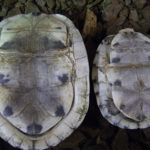
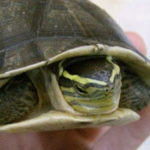
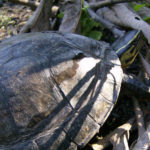
Anything but Bland
Breeding the disappearing Blanding’s turtle.
Most people identify a Blanding’s turtle (Emydoidea blandingii) by its long yellow neck, but size is also a distinguishing factor. Reaching 8 to 12 inches long, the species grows much larger than most North American turtles, and it is speckled from head to toe with light yellow markings. Blanding’s turtles can live to be more than 80 years old, but research is still being done to determine whether they live longer. Once fairly common and inexpensive in the pet trade, this turtle has been slowly disappearing in the wild.
Great Lakes Distribution
Emydoidea blandingii roams mainly in and around the Great Lakes Region. The turtle’s range is as far east as Massachusetts, as far north as southern Canada, as far south as central Nebraska and as far west as Wisconsin. Habitat consists of marshy meadows, small bogs, shallow lakes and slow-moving streams with heavy vegetation. Deeper water with a current sometimes drowns these turtles.
Roadway traffic and predators have significantly hurt this species and created a dire need for captive-breeding-and-release programs. Blanding’s turtles lay larger clutches than some turtles, and the larger size creates a stronger scent. Development has forced predators, such as raccoons, opossums, foxes, coyotes and skunks, into smaller wooded areas. More predators in a certain area increases the chance of something sniffing out every Blanding’s turtle egg in the ground around an entire marsh.
The Right Setup
An enclosure large enough for a pair of adult Blanding’s turtles measures at least 3 feet long by 2 feet wide. It should be 1 to 2 feet tall, so the turtles can’t climb out, and an overhang that keeps climbers within the cage is a good idea. The enclosure also should have a water depth no more than 2 feet deep for adults and between 4 to 6 inches for juveniles less than 6 inches long. A basking log that allows your turtle to dry off is a necessity to prevent fungus growth. The turtle should also be able to rest its entire body on it and stretch out.
Proper lighting is also a must; either natural or artificial lighting will work. If this turtle is housed indoors, UVB fluorescent lighting is needed for proper shell growth. A heat bulb is also mandatory, especially for young Blanding’s turtles. If the temperature is too low, the turtle will be sluggish and won’t eat; it could eventually starve to death. Ambient temperatures around 80 degrees Fahrenheit and a basking area around 85 to 90 degrees are ideal.
A good water filter is key to preventing respiratory infection. Large amounts of oxygen in the water help fight small ammonia pools. Urine creates these pools, and they cause your turtle to gasp for air and display small bubbles around the nasal area. Set up your filter so it splashes the water around the enclosure, but avoid splashing the basking area, which must stay dry at all times.
Artificial plants make good decor in any enclosure. They allow the turtle to hide and feel more comfortable. They also offer resting places when the turtle surfaces for air. A tired turtle in the water could drown. Just avoid placing plants too close to the filter.
Enthusiastic Breeders
Unlike most North American turtles, Blanding’s turtles are active even in extreme temperatures, and they like cold water. I have witnessed them breeding under a foot of ice. Of course, cold temperatures make them move slower, but activity still occurs.
Males and females are easy to distinguish. Males can have longer tails, darker colored eyes and a slightly indented plastron, which helps to make breeding easier.
The best way to breed Blanding’s turtles is to make sure they go through a cold hibernation first. They thrive outdoors in the northern United States, and they should breed normally if kept outside or if outside temperatures are simulated. Brumate them at temperatures between 35 and 40 degrees for three months.
Breeding takes place in the fall, winter and spring. This, of course, is based on the temperatures at which the turtles are kept. Sometimes cold water from a water change or rain might be enough to trigger a small breeding period during the summer.
Eggs and Incubation
I have witnessed a female Blanding’s turtle lay anywhere from nine to 22 eggs. Those left in the ground should incubate for 55 to 75 days.
Artificially incubated eggs only take 50 to 60 days depending on incubation temperature. Set it around 78 degrees if you want to produce mainly males. A setting between 80 and 83 degrees produces a mix of males and females, and 85 to 88 degrees produces all females. Temperatures greater than 88 degrees can cause abnormal shell patterns.
Fragile Hatchlings
When a hatchling Blanding’s turtle starts to break through its egg, do not rush it. Let the turtle crawl out on its own. A turtle that is disturbed might exit the eggshell too early and cause the egg sac to tear and then become infected. An infection could kill the turtle.
Should a hatchling come out of the egg too early, carefully spray the egg sac with water to wash off any substrate. Then carefully place the hatchling on a wet paper towel in a plastic container. During the next few days the hatchling should absorb the rest of its egg sac, which will help the plastron to harden.
A baby might not eat for a few days after absorbing the entire egg sac. Offer them a variety of foods because nutrients are much more important at a young age. I offer my turtles ReptoMin, Aquamax 500, mealworms, earthworms, crickets, beef, chicken and their favorite: turkey bacon.
One to six hatchlings can be set up in a 10-gallon tank with proper filtration. Like with the adults, oxygen flow is important for hatchlings. I use a fluval filter and place thick artificial plants in the water to give the turtles plenty of hiding and resting places. A water depth between 4 and 6 inches is best. Shallower depths make it more difficult to set up a filter, and deeper depths increase the chances of the turtle drowning.
UVB light and heat are also important, so be sure to have the right lighting. Temperatures are the same as those for the adults.
Hatchling Blanding’s turtles can be fragile. Pay close attention to them for the first year of their lives. They grow about 1 to 2 inches each year until they reach adulthood. Some become adults at approximately 5 years of age.
Breeding these attractive turtles is not only rewarding for the dedicated turtlekeeper, but it also helps to ensure stable populations in captivity. REPTILES
AL ROACH is the founder and owner of Reptastic.com. He has written two books: The Spotted Turtle: North America’s Best and The North American Wood Turtle: Old Red Legs. Roach has dedicated his life to helping animals, and his main goal is to establish breed-and-release programs for many different species across the country.
SIDEBARS
Feed to Breed
When raising and breeding a Blanding’s turtle in captivity, offering a diet of fish, chicken, beef and insects is important. I use AquaMax 500, which is a good source of nutrition. ReptoMin is another favorite I’ve used in the past, and it is quite popular with turtle enthusiasts.
Info
The IUCN Red List of Threatened Species categorizes these turtles as Near Threatened. It is illegal to collect these turtles from the wild without a permit from the state where the collecting will take place.
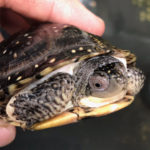
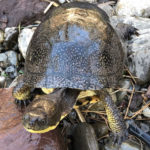
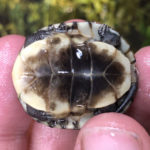
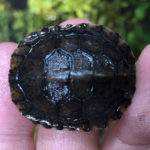
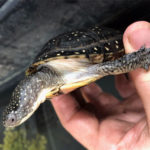
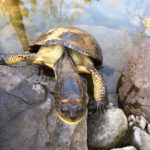
icdbibadbivd
a;djvbjiadsvibdsv
a;rdjvbiperavibeJ;BV
erjnvpubierivbjkead
akdjfvjbadfjvbjda
ad;fjvj;adfjv
ajdkfvbljbvjkd
akjbvlhadbvhbkj;v
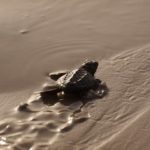

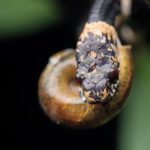

care sheet testcare sheet testcare sheet test
care sheet test
care sheet test
care sheet test
care sheet test
care sheet testsjdvbpjasdbpvjbjd
a;djbvihbdafjbnaldkfv
mnmvndbsppbjbvaeruhboiera
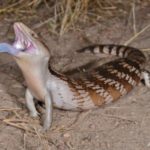
[singlepic id=1 w=120 h=90 ]
[singlepic id=1 w=120 h=90 ]
Thank you for visiting Reptastic.com!!! Our main goal is to have a user friendly online website for people to enjoy sharing photo’s, care keeping, breeding idea’s and so much more!! Feel free to register in our forums and post in the categories they belong as well as in our classifieds or photo galleries.
Reptastic.com also promotes conservation of wildlife in all species of reptiles and amphibians!! Please be sure to do your part as so many species are in danger!




















